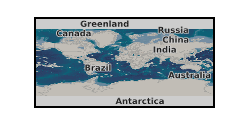Mixing
Type of resources
Topics
Keywords
Contact for the resource
Provided by
Years
Formats
Update frequencies
-

The data contains three-dimensional maps of the temporal and spatial distribution of tracer concentration during miscible displacements with aqueous solutions in two cylindrical porous samples, thus including beadpack (BP) and Ketton Limestone (KL). The dynamic imaging of the displacement process was conducted using two different PET scanners, namely a Siemens Biograph 64 PET/CT for the experiments with the BP (at Imanova Ltd, UK) and a Siemens INVEON DPET for the experiments with KL (at Stanford University, USA). The experiments were carried out at flow rates, q = 10 mL/min for BP and q = 4 mL/min for KL. Each PET image represents an average over a constant time frame (45 frames of 20 seconds each for BP and 40 frames of 60 seconds each for KL). For BP, each 3D tomogram includes (128 x 128 x 111) voxels with size (1.34 x 1.34 x 2) mm3. For KL, each 3D tomogram includes (128 x 128 x 159) voxels with size (0.78 x 0.78 x 0.8) mm3. The PET dataset was used in Kurotori et al. (2018)* to characterise mm-scale dispersion during miscible displacements in these two porous media. The experimental observations of the spatio-temporal evolution of the tracer plume can also be used as a benchmark test for different numerical models for solute transport in heterogeneous porous media. Further details on the use of the PET images can be found in Kurotori et al. (2018). *T. Kurotori, C. Zahasky, S. A. Hosseinzadeh Hejazi, S.M. Shah, S.M. Benson, Measuring, imaging and modelling solute transport in a microporous limestone, Chemical Engineering Science (2018), under review.
 BGS Data Catalogue
BGS Data Catalogue